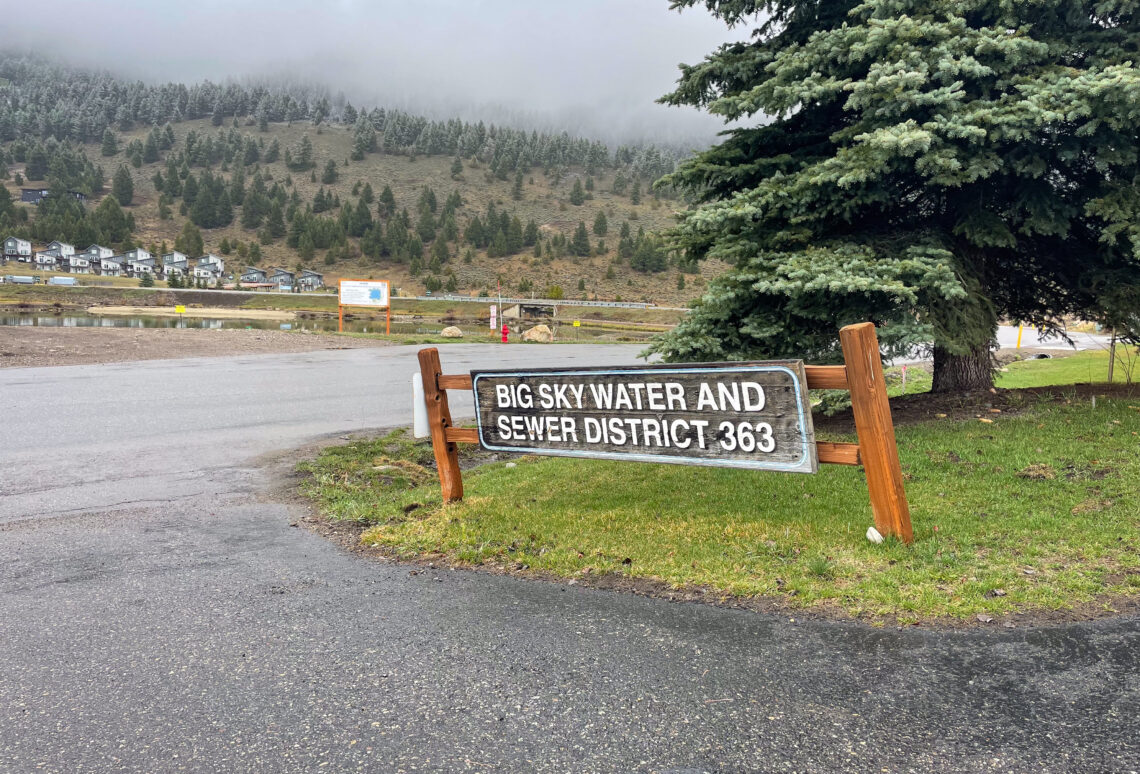Rate hikes aim to cover rising costs; public rate hearing scheduled May 20
By Jack Reaney SENIOR EDITOR
Things aren’t getting any cheaper for the Big Sky County Water and Sewer District, and the district is preparing to pass more of its operating costs onto ratepayers gradually over the next five years.
Acting on recommendations in its capital improvement plan, the district expects to raise water rates by 5% for both base rate and volume, and sewer services by 10% on base rates and 3% on volume rates. A public hearing will be held on Tuesday, May 20 at 8 a.m. at the BSCWSD office, and the district will make a final decision in June before rate changes go into effect July 1.
Finance Officer Terry Smith said the hearing will provide an opportunity for the public to see the district’s budget and understand the reason for rate increases.
“The district is trying to perform at a professional level and provide the community the water and sewer system that they’re paying for,” Smith told EBS. Smith and District Clerk Amy Sands explained that Big Sky’s new Water Resource Recovery Facility costs more than the previous facility by a wider-than-expected margin due to rising construction and labor costs—the district has staffed up from nine to 15 in the past year to be more professional and proactive.
“We know that our current rate level is insufficient to cover our costs. As a result, we’re going to attempt to meet our costs over a long period of time rather than try to meet it immediately,” Smith said. He explained that if the district tried to match rates to costs in one single rate increase, it would be too drastic for the user base. “Construction costs have just gone through the roof. We anticipated spending approximately $40 million or so, which is two-thirds of what we ultimately ended up spending.”
Sands added, “We’re open to hearing from the community. We’re working for them, so we are doing the best we can to keep our costs down. We’re evaluating our costs all the time, but we’re also trying to provide the highest level of service to them. So we want to hear from them, and we want to have a real conversation.”
Sands explained that the new WRRF is producing higher-than-expected quality effluent. She said it was the district’s commitment to the community to produce the highest-level wastewater treatment possible, and now that result means higher rates.
Ratepayers can expect services to increase in cost on July 1 each year for the next two years, before the district reevaluates its five-year plan. Annexations are a variable—uncertainty surrounds potential new customers from the Cold Smoke neighborhood and the Gallatin Canyon sewer project—and leave the district unable to reliably forecast rates far into the future.
Board member Al Malinowski said as the WRRF approaches its treatment capacity, costs will be spread out among a wider base of customers.
“We’re trying to be a little bit more intentional about slowly increasing these rates, so that as we add users, they’re contributing to that cost as well,” Malinowski said during the BSCWSD board meeting on April 15. “…We looked initially at a much larger increase to get us closer to where we need to be, but when we take that in to consideration, it’s hard to put the burden on someone who’s chosen to build earlier, than someone else who’s going to build next year, or in five years.”
Consultant Ryan Graf explained the emphasis on base rate increases for sewer services: Big Sky’s seasonal, rental-oriented population results in more revenue from volume side, which means volatility. The 3% volume rate increase and 10% base rate increase would balance out fees between the categories.
The district’s combined rate increases are expected to bring an 8.75% annual increase—roughly $422,000 per year—to the district’s operating revenue.
“Whether we’re able to put any money into reserves is a longshot this year,” Smith said during the board meeting. Legal expenses are certainly not helping.
Continued lawsuits cost millions
Malinowski noted that the district has allocated $600,000 this fiscal year alone to legal expenses as the district defends itself against environmental lawsuits, with the total expected to reach $800,000—that would be $600,000 over this year’s legal budget.
Since 2019, the district has spent nearly $3 million on legal fees, despite winning every lawsuit served to the district by Cottonwood Environmental Law Center.
“I think it’s important for the community to know, that a significant amount of money that could be used for other purposes—whether it be replacing assets, or decreasing, even potentially, rate increases—is being expended every year to defend the district against lawsuits,” Malinowski said.
Board chair Brian Wheeler announced April 15 that another suit has recently been filed involving Ron Edwards, former general manager, and the district will most likely be responsible for legal costs.
“This has gone from a small brush fire to a wildfire on these legal fees… It’s really one case after another with the same firm,” Wheeler said, referring to Cottonwood.
“I think the community needs to understand what impact this is having on them as ratepayers… When you start talking three million dollars, I think this is getting out of hand,” Wheeler added.
Malinowski noted that the district has been under budget in other areas, helping to minimize the net impact of legal fees.













